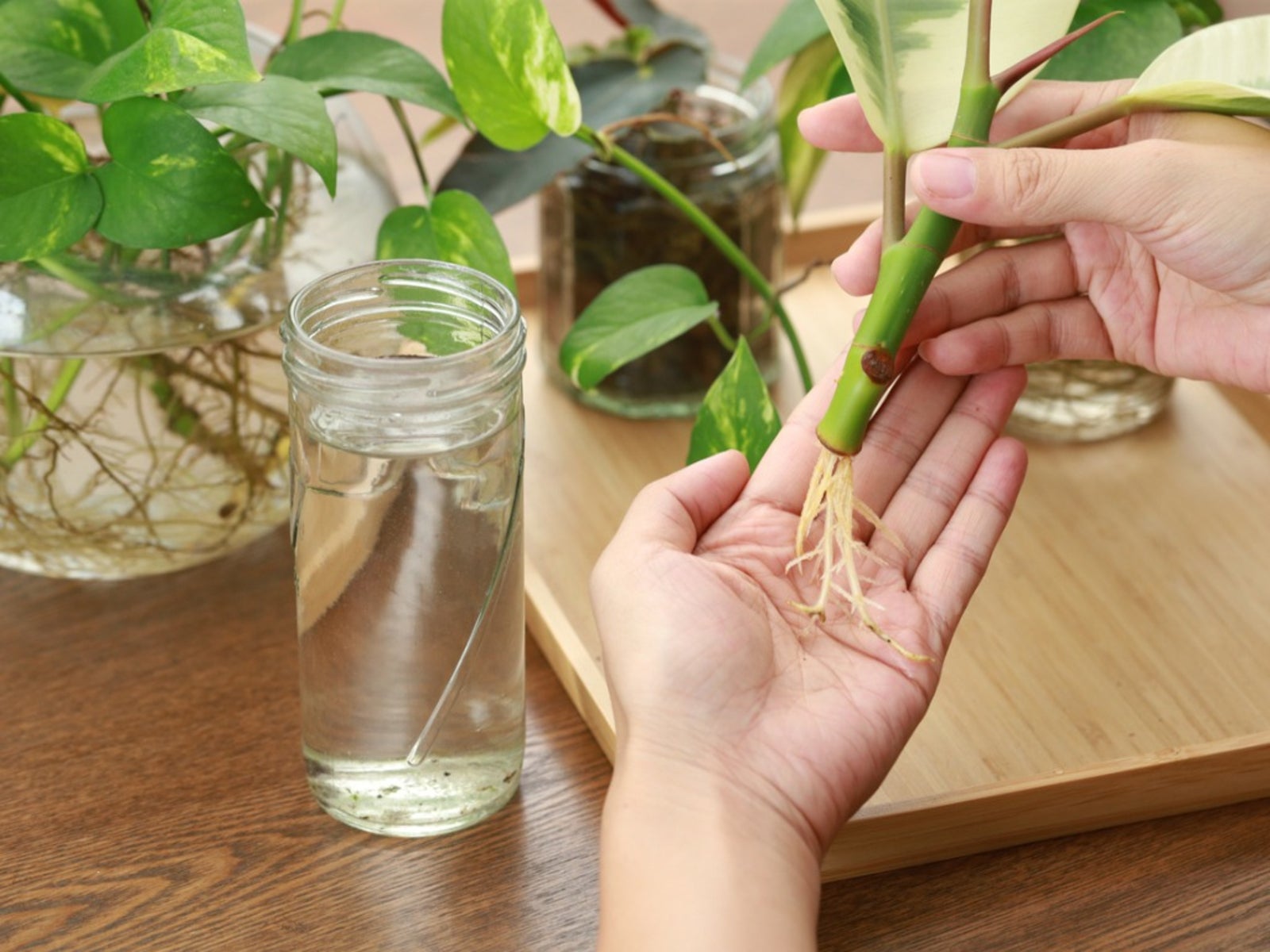Propagating Houseplants From Cane Cuttings And Divisions


There are a number of ways to propagate plants. One way of propagating houseplants is through cane cuttings and divisions. Learn more about these methods in this article.
Cane Cuttings
Cane cuttings involve taking bare stems and cutting them into 8 to 13 cm long pieces and either sticking them vertically into pots of compost or pressing them horizontally into the surface of the compost to root. This is how you would propagate plants like the yucca or dieffenbachia. Sometimes you can simply purchase already prepared cuttings of yucca at the store. If you purchase these, just stick them vertically into cuttings compost and keep it at gentle temperatures until roots and shoots start to form. Old dieffenbachia plants and others like it sometimes have a few different long, bare stems that have small tufts of leaves at the top. Instead of simply snipping these off and losing the new growth, you can cut these stems into pieces about 8 cm long. Remember that when you handle dieffenbachia, wear gloves and be sure not to touch your mouth and eyes. You don't want to get that sap in them. To take a cane cutting, use a sharp knife to cut a nice, healthy stem from the congested base of the plant. Make sure to cut low to ensure that you don't leave an unsightly, stubby piece in the plant. Make sure you don't damage the rest of the plant while taking your cutting either. Take the stem and cut it into several pieces about 8 cm long each. You want to make sure there is one strong, healthy bud on each length that was cut to create good upward growth. These will develop into healthy new shoots. Take a wide pot and fill it with equal parts of moist peat and sand and firm it to 1 cm below the rim. Press each cutting horizontally into the compost and secure it with pieces of bent wire. Make sure to press the cutting about halfway its thickness into the compost. Water the compost and allow the pan to drain. Place plastic over the pot to help keep it warm.
Divisions
Another way to increase overcrowded houseplants is by division. African violet (Saintpaulia) is a plant that is easily increased by removing congested plant parts from their pots and teasing the plants and roots apart. Just tap the edge of a congested pot on a hard surface to loosen and remove the root ball. Take the plants and gently pull them apart and repot the young pieces into small individual pots. Be sure to water gently from below the pot. Plants that have variegated leaves, like the snake plant Sansevieria trifasciata 'Laurentii', have to be propagated by division if the variegation of the leaves is to be maintained. If you don't propagate properly, the plant will not breed true. To divide plants like the Sansevierias, wait until the root ball completely fills the pot. At that point there will be many stems and leaves coming out of the center of the pot. When it's necessary to divide the plant, water the compost the day before to make sure the roots, stems and leaves are full of moisture. If you don't, the plants are less likely to survive division. Take the plant and invert it and knock the pot's rim on a hard surface. Ease the plant out, taking care to support the root ball. You don't want the root ball to break apart or fall on the floor. Use your fingers to gently tease and pull apart the root ball. At this point, you can divide the plant into several substantially sized pieces. You might have to cut through some of the roots, but try not to if it isn't absolutely necessary. Throw away the old pieces from the plant's center and only use the younger, outer parts. Finally, take a clean pot that is slightly smaller than the one you had the large plant in. Make sure, however, the new pot is large enough to hold all the roots. Place the compost into its base and position the divided pieces of the plant in the center of the pot. Hold the plant so that the soil-mark indicating the earlier depth of the plant is about 1 cm below the rim of the new pot. This will help you figure out how much compost you need to fill the pot. Gently trickle compost around the roots and spread it in even layers around the plant. Fill and firm the compost to within 1 cm of the rim of the new pot. Be sure to lightly water the plant, allowing excess moisture to drain out of the new pot. If you follow these simple instructions, propagating plants with cane cuttings or by division should allow you to have a lot of new plants every so often. This saves you money and will give you a sense of accomplishment because you started the plants yourself.
Sign up for the Gardening Know How newsletter today and receive a free copy of our e-book "How to Grow Delicious Tomatoes".

Heather Rhoades founded Gardening Know How in 2007. She holds degrees from Cleveland State University and Northern Kentucky University. She is an avid gardener with a passion for community, and is a recipient of the Master Gardeners of Ohio Lifetime Achievement Award.